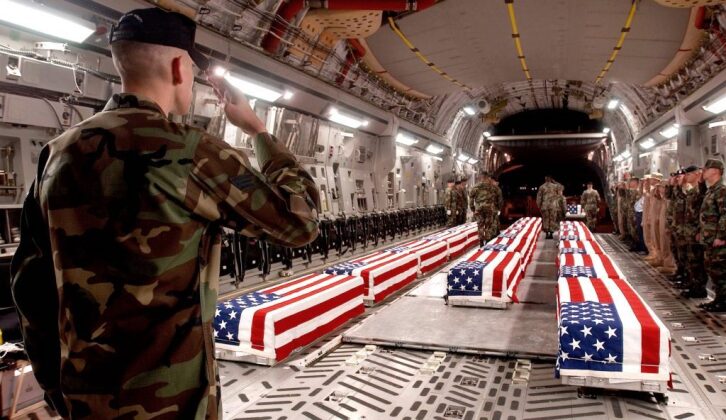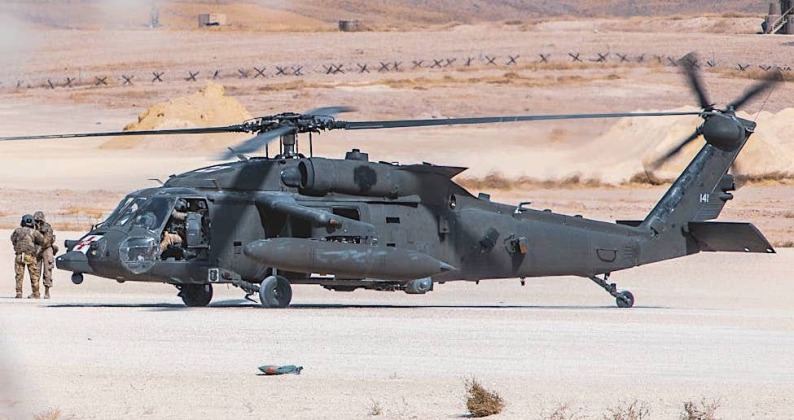U.S. Forces Take 37+ Casualties in Drone Strike on Frontier Mideast Base: How Will Escalating Hostilities Evolve?

U.S. Military Personnel Honour Fallen Soldiers
On January 28 U.S. forces at the Tower 22 military facility on the Jordanian-Syrian border took over 30 casualties in an overnight drone attack, with three U.S. Army soldiers killed in the strike. This represents the highest casualty count for an attack on American forces in the region since an Iranian missile strike on military facilities in Iraq caused over 100 U.S. casualties on January 8, 2020.
The latest count for the most recent strike places casualties at 37 personnel, rising from an initially reported “under 30,” with strong precedents remaining for a further increase in announced casualties. The number of reported casualties from the January 2020 attack, for example, steadily rose from under 30 to over 60 before being confirmed weeks later at over 100.
The party responsible for the attack remains uncertain, and while the Iranian government had before the end of the day denied responsibility, U.S. President Joe Biden stated that the strike “was carried out by radical Iran-backed militant groups operating in Syria and Iraq.”
U.S. forces in the Middle East have come under escalating attacks since early October, when the country significantly escalated its regional military presence and alongside other Western states began to provide significant support to an Israeli war effort against Palestinian militia groups in the Gaza Strip.

U.S. Army Black Hawk in Syria
Although prior attacks on American military facilities in both Syria and Iraq were not reported to have caused any deaths among serving U.S. Military personnel, they did cause injuries and lead to a reduction in the American presence at some facilities in Syria.

U.S. Army Black Hawk in Syria
Although prior attacks on American military facilities in both Syria and Iraq were not reported to have caused any deaths among serving U.S. Military personnel, they did cause injuries and lead to a reduction in the American presence at some facilities in Syria.
Drone strikes and rocket artillery attacks from October 17-24, for example, caused 24 casualties among American forces in Syria but no deaths.
American forces in Syria have been involved in mass appropriations of Syrian oil, which has been sold on abroad to finance the U.S. occupation of Northeastern Syria. While these appropriations have been widely condemned as acts of pillaging, the very presence of American forces on Syrian soil has also consistently been characterised as illegal by sources outside the Western world due to its lack of authorisation from either the United Nations or the Syrian government.
In parallel to attacks on its ground forces, continuous violations of Syrian airspace by American military aircraft in 2023 began to face unprecedented resistance from Russian fighter planes based in the country, which in July caused serious damage to an American MQ-9 Reaper drone by launching flares in its flight path.
Alongside attacks, U.S. forces in Syria have also taken casualties in a number of accidents, with the most notable being a UH-60 Black Hawk helicopter crash in June 2022 which caused 22 casualties and required 15 personnel to be moved to higher care facilities outside the country.
The use of drones in the latest strike on January 28 notably also follows the first reported deployment of single use ‘kamikaze’ drones by the Iranian-backed Lebanese militia group Hezbollah to destroy Israeli Iron Dome air defence systems, which was reported on January 26 and marks the latest major development in months of skirmishes between the two parties.
The use of drones in the latest strike on January 28 notably also follows the first reported deployment of single use ‘kamikaze’ drones by the Iranian-backed Lebanese militia group Hezbollah to destroy Israeli Iron Dome air defence systems, which was reported on January 26 and marks the latest major development in months of skirmishes between the two parties.
It has been speculated that Washington may attribute blame to Hezbollah for the latest attack, as it remains by far the most capable non-state military force in the region.
No comments:
Post a Comment